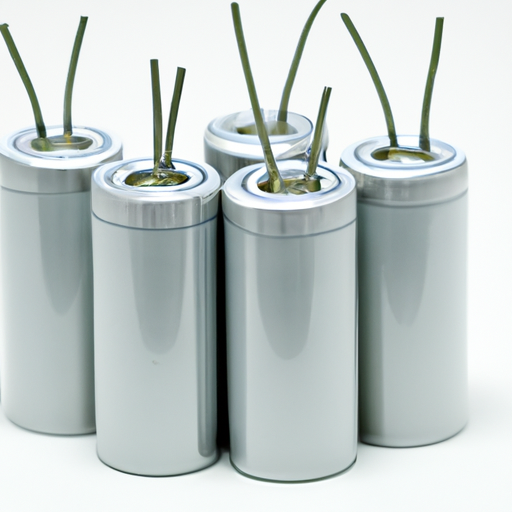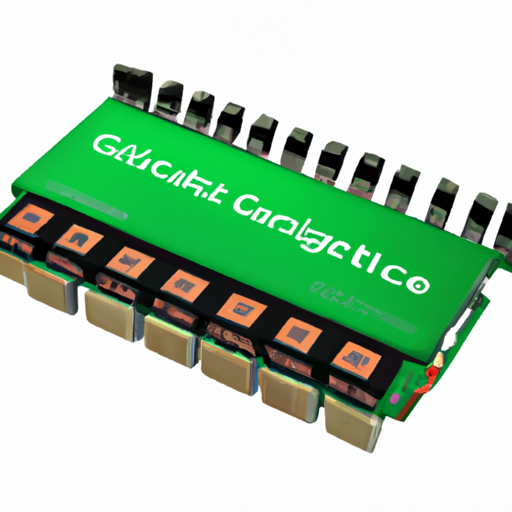What is the mainstream production process of high-voltage capacitors?
What is the Mainstream Production Process of High-Voltage Capacitors?
I. Introduction
High-voltage capacitors are essential components in various electrical and electronic systems, designed to store and release electrical energy efficiently. These capacitors are characterized by their ability to operate at voltages significantly higher than standard capacitors, making them crucial in applications such as power transmission, energy storage systems, and industrial machinery. The production process of high-voltage capacitors is intricate and involves several stages, from raw material selection to final testing and distribution. This blog post will explore the mainstream production process of high-voltage capacitors, highlighting the key steps and considerations involved.
II. Types of High-Voltage Capacitors
High-voltage capacitors come in several types, each with unique properties and applications:
A. Ceramic Capacitors
Ceramic capacitors are known for their stability and reliability, making them suitable for high-frequency applications. They are often used in power electronics and RF circuits.
B. Film Capacitors
Film capacitors utilize thin plastic films as dielectric materials. They are favored for their low losses and high insulation resistance, commonly found in power factor correction and energy storage applications.
C. Electrolytic Capacitors
Electrolytic capacitors are polarized devices that offer high capacitance values in a compact size. They are widely used in power supply circuits and energy storage systems.
D. Tantalum Capacitors
Tantalum capacitors are known for their high capacitance-to-volume ratio and reliability. They are often used in military and aerospace applications due to their robustness.
E. Comparison of Different Types
Each type of high-voltage capacitor has its advantages and disadvantages, making them suitable for specific applications. Understanding these differences is crucial for selecting the right capacitor for a given application.
III. Raw Materials
A. Overview of Materials Used
The production of high-voltage capacitors requires high-quality raw materials, including:
1. **Dielectric Materials**: These materials, such as ceramic, polyester, or polypropylene, are essential for storing electrical energy.
2. **Conductive Materials**: Metals like aluminum, tantalum, and copper are used for the electrodes, providing the necessary conductivity.
B. Quality Control of Raw Materials
Ensuring the quality of raw materials is critical, as any defects can lead to capacitor failure. Manufacturers implement stringent quality control measures, including material testing and certification.
C. Sourcing and Sustainability Considerations
With increasing awareness of environmental issues, manufacturers are focusing on sustainable sourcing of materials. This includes using recycled materials and ensuring that raw materials are obtained responsibly.
IV. Design and Engineering
A. Initial Design Considerations
The design phase is crucial in determining the performance of high-voltage capacitors. Key considerations include:
1. **Voltage Rating**: The maximum voltage the capacitor can handle without failure.
2. **Capacitance Value**: The amount of electrical charge the capacitor can store.
3. **Size and Form Factor**: The physical dimensions of the capacitor, which can impact its application.
B. Simulation and Modeling
Advanced simulation tools are used to model the electrical and thermal behavior of capacitors under various conditions. This helps engineers optimize designs before moving to prototyping.
C. Prototyping and Testing
Once a design is finalized, prototypes are created for testing. This phase is critical for identifying potential issues and ensuring that the capacitor meets performance specifications.
V. Manufacturing Process
A. Dielectric Layer Production
The production of the dielectric layer is a vital step in capacitor manufacturing:
1. **Material Preparation**: Raw dielectric materials are processed to achieve the desired properties.
2. **Layering Techniques**: Techniques such as extrusion or casting are used to create thin dielectric layers.
B. Electrode Fabrication
Electrode fabrication involves selecting appropriate conductive materials and applying them to the dielectric layers. This can be done through methods like sputtering or chemical vapor deposition.
C. Assembly of Capacitor Components
The assembly process includes:
1. **Layer Stacking**: The dielectric and electrode layers are stacked to form the capacitor structure.
2. **Encapsulation Techniques**: The assembled capacitor is encapsulated to protect it from environmental factors and mechanical stress.
D. Quality Assurance During Manufacturing
Quality assurance is integrated throughout the manufacturing process, with in-process testing to identify defects early and final inspections to ensure compliance with specifications.
VI. Testing and Quality Control
A. Electrical Testing
Electrical testing is crucial to verify the performance of high-voltage capacitors:
1. **Voltage Withstand Tests**: Capacitors are subjected to high voltages to ensure they can operate safely under stress.
2. **Capacitance Measurement**: The actual capacitance is measured to confirm it meets design specifications.
B. Environmental Testing
Environmental testing assesses how capacitors perform under various conditions:
1. **Temperature and Humidity Tests**: Capacitors are exposed to extreme temperatures and humidity levels to evaluate their reliability.
2. **Mechanical Stress Tests**: Tests simulate physical stresses to ensure the capacitor can withstand real-world conditions.
C. Compliance with Industry Standards
Manufacturers must comply with industry standards such as IEC and UL certifications, ensuring that their products meet safety and performance requirements.
VII. Packaging and Distribution
A. Packaging Considerations for High-Voltage Capacitors
Proper packaging is essential to protect capacitors during transportation and storage. Packaging materials must be durable and capable of withstanding environmental conditions.
B. Logistics and Distribution Channels
Efficient logistics and distribution channels are vital for delivering capacitors to customers. This includes managing inventory and ensuring timely delivery.
C. Handling and Storage Requirements
High-voltage capacitors require specific handling and storage conditions to prevent damage. Manufacturers provide guidelines to ensure safe handling throughout the supply chain.
VIII. Challenges in Production
A. Technological Advancements and Their Impact
Rapid technological advancements can pose challenges for manufacturers, requiring continuous adaptation to new materials and processes.
B. Supply Chain Issues
Global supply chain disruptions can impact the availability of raw materials, affecting production schedules and costs.
C. Environmental Regulations and Sustainability
Manufacturers must navigate increasingly stringent environmental regulations, pushing them to adopt sustainable practices in their production processes.
IX. Future Trends in High-Voltage Capacitor Production
A. Innovations in Materials and Technology
The future of high-voltage capacitor production will likely see innovations in materials, such as the development of new dielectric materials that offer better performance and reliability.
B. Market Demand and Growth Projections
As industries increasingly rely on renewable energy and electric vehicles, the demand for high-voltage capacitors is expected to grow, driving further advancements in production techniques.
C. Potential Shifts in Manufacturing Practices
Manufacturers may adopt more automated and efficient production methods, leveraging technologies like AI and machine learning to enhance quality control and reduce costs.
X. Conclusion
The production process of high-voltage capacitors is a complex and multifaceted endeavor that requires careful consideration of materials, design, manufacturing techniques, and quality control. As technology continues to evolve, the importance of high-voltage capacitors in modern applications will only increase. By understanding the production process and the challenges faced by manufacturers, we can appreciate the critical role these components play in powering our world. The future of capacitor manufacturing looks promising, with innovations on the horizon that will enhance performance and sustainability, ensuring that high-voltage capacitors remain integral to technological advancement.







